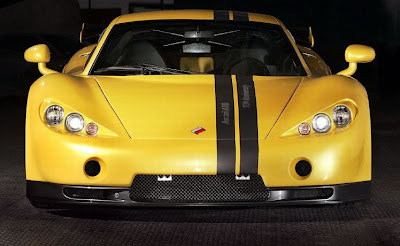A lot of super cars are produced almost every year by the most famous car giants in the world. No wonder the competition to come out with the fastest breed of super cars becomes more interesting. British car manufacturer, Ascari, produced the powerful Ascari A10 in commemoration of its 10th anniversary in the industry. The Ascari A10 is a road car version of the KZ1-R race car that competed in the Spanish GT Championship. Former F1 designer Paul Brown penned this third road car that Ascari has produced in Banbury, England. The first two super road cars were the KZ1 and the Ecosse.
Engine Performance
The new A10 will have drivers enjoying the performance of a modified BMW 5.0 V8 engine that produces 625 bhp that is delivered by a six speed manual gearbox and standard manual transmission. With the same carbon chassis like the KZ1, it features a new bodywork and suspension that is racing derived. It also has a fire suppression system and is lightweight at 1,280 kilograms. The A10 accelerates at 60 miles per hour in less than 3 seconds and runs at a top speed of 220 miles per hour.
Exterior
Its body is a bit similar to its cousin but is not entirely identical. The single headlights were swapped and now sports three projector style lamps with the lower driving lights gone. It has a lower front skirt and wider apertures. The curvy carbon fiber wing is large and its meshed louvres were cut into the rear for cooling purposes. A radiator that is centrally located just above its rear venturi duct adds a fresh look.
The alloy spokes and carbon fiber rims have center lock fittings. Michelin Tires provided the rubber for this super car with a 265/35 front ZR18 and 345/50 ZR 18 for the rear. Brakes are ventilated by ceramic discs and are clamped by racing calipers on the front and back. The mid-mounted machine is similar to that of the Kz1's naturally aspirated V8; however, with the reprofiled cams and brand new rods and pistons, the A10 produces 625 bhp at an rpm of 7500. The A10 also features lightweight racing seats, carbon fiber door panels, electric windows, climate control and a remote central lock system. The super car proves to be more than just a revamp of the racing model KZ1.
Limited Edition
Ascari announced that only 50 units were to be produced for this version and will be sold with a price tag of 350,000 GBP. This limited availability certainly puts the Ascari A10 on the list of many collectors' items. The engineers of Ascari Banbury ensured that the 220 mph car will deliver a world-class performance like that of the Pagani, Mosler and Koenigsegg. The next generation dream drive from Ascari underwent rigorous testing prior to its 2006 release.
Although it lacks the luxuries of soundproofing and air conditioning the car still features hardcore fire extinguisher kits and FIA approved integral roll cage. Unlike the FXX Enzo, you can legally drive this beauty on the road.










































